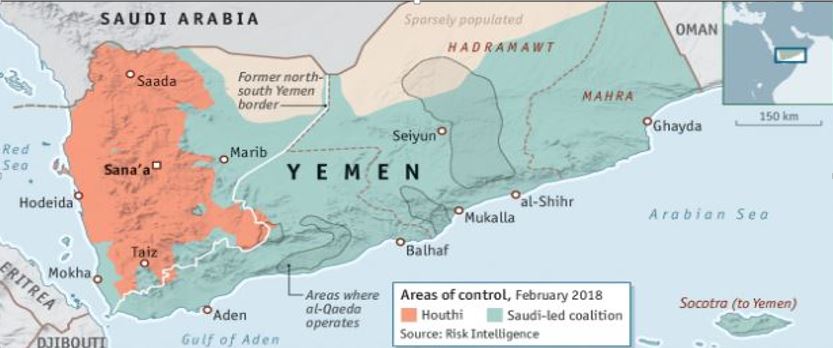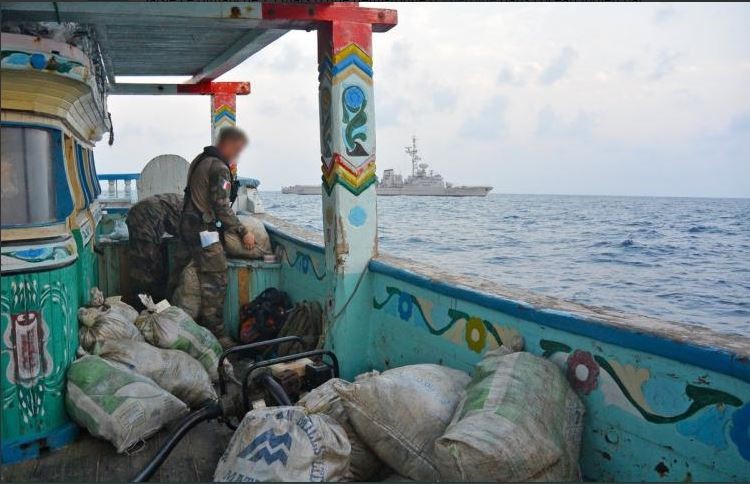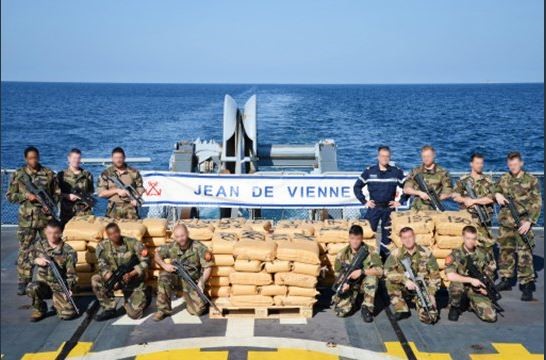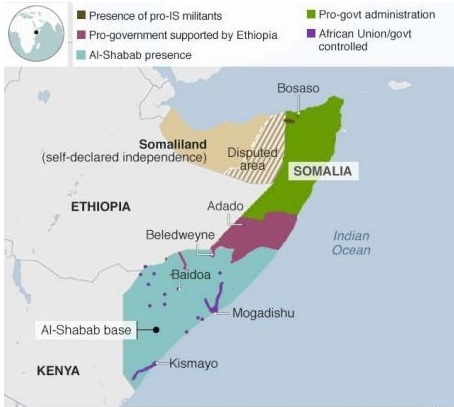Indian Ocean HRA Overview
Continued reported incidents reflect that the HRA remains a threat in regards to piracy activity in the region. Recent efforts to improve the security environment will reduce the impact of Somali piracy, however, continuing deterioration of onshore conditions in Somalia and Yemen such as famine, terrorist groups, a weak central government and poor governance of coastal areas continue to influence piracy in the region. Pirate financiers capitalise on the chaos offering opportunities to local people. Piracy groups onshore Somalia still bear the motivation to try and carry out attacks and still with capability to target merchant vessels. Increasingly, vessels in the HRA are subjected to incidents that appear to be co-ordinated small boat piracy approaches however they choose not to ultimately attack. These incidents are then difficult to classify as attempted piracy or simply as regional patterns of life in the area. However, as seen in recent months there have been numerous attacks and attempted boarding’s ranging from incidents in the Somali Basin, Gulf of Oman, Gulf of Aden and the Southern Red Sea. The increased presence of naval patrols and armed security on board vessels act as a deterrent to the threat of piracy, however those vessels transiting in the area without the presence of armed security remain a significant risk.
Reported Incidents HRA
No incidents to report (UKMTO)
French Navy seizes drugs in Arabian Sea: The French Navy’s anti-submarine frigate Jean de Vienne supporting the task force CTF150 (a naval task force operating in the Indian Ocean) seized 530kg of heroin in the Arabian Sea on the 25th March in its second drug seizure this year.
The frigate intercepted a suspicious dhow and it is reported the heroin found has an estimated value of 125 million euros. On the 5th March the same frigate seized over 4 tonnes of hashish during an operation in the Arabian Sea, together with HMAS Warramunga the two ships had confiscated over $400million of narcotics in 48 hours.
In 2018 multinational assets in support of the CTF150 have seized over 22 tonnes of hashish and over 2 tonnes of heroin, valued at street value in excess of $1.6 billion.
Recent large drug seizures in the Arabian Sea highlight the shipments heading in southerly flows are likely to be travelling to regions in East Africa. These regions are used predominantly as transit zones and have a direct impact on the operations of terrorist organisations. The naval task force seeks to disrupt smuggling networks transferring illicit narcotics from Central Asia through to East Africa.
Yemen Update
The Houthi rebels still hold a large part of Yemeni territory with no political solution in sight. International attention in Yemen continues to call for an end to the ongoing conflict however the prospects of peace are bleak. The continued presence of al-Qaeda and the growing southern secessionist movement further increases instability and conflict in Yemen.
This Week
Saudi Arabia intercepts 7 missiles fired from Yemen: Saudi forces reported they have shot down seven ballistic missiles fired into Saudi territory by Houthi rebels in Yemen. Three of the missiles were fired at the capital Riyadh on Sunday 25th March and an Egyptian man was killed when fragments landed in a suburb. Four other missiles also launched from Yemen, were intercepted earlier that day and were aimed at Najran, Jizan and Khamis Mushait. Sunday 25th was the third anniversary of the intervention by the Saudi-led coalition in the conflict in Yemen. Houthi rebels said they had been aiming at a number of locations, including Riyadh’s international airport. The coalition accuses Iran of supplying the Houthis with the missiles, a claim denied by Tehran.
Ongoing Threat of Violence/Terrorism at Sea off the Coast of Yemen
- Yemen’s civil war has created an environment mirroring Somalia’s lawlessness. The ongoing conflict in Yemen demonstrates how poor security on land has led to violence spilling out into the maritime domain. Houthi rebels continue to control a large amount of Yemen’s red sea coastline.
- Suspicious approaches continue in the Bab el Mandeb Strait and Gulf of Aden.
- In relation to coalition forces advancing towards the Red Sea port city of Hudaydah, currently under Houthi rebel control, increases the risk to shipping in the region. In the past Houthi rebels have repeatedly threatened to attack merchant vessels in the region should coalition forces attempt to re-take Hudaydah port. If coalition forces seized Hudaydah it could be argued this would be a turning point in the civil war as the Houthi rebels would lose their main source of finance through the port in which illegal arms are smuggled.
- Unconfirmed reports surfaced on the 7th January 2018 stating that the Saudi coalition had destroyed at least one Houthi vessel near Hudaydah port after an alleged attack occurred against a Saudi oil tanker. The vessel was reported to be loaded with explosives and controlled remotely.
- The threat of terrorism at sea off the coast of Yemen remains by rebel groups and terrorist organisations such as AQAP remains. Such is highlighted by attacks against the LNG Tanker Galacia Spirit in October 2016 and the MT Muskie a product tanker in May 2017. Both involved the use of explosive laden skiffs, as an attempt to cause major devastation in the critical international shipping passage of the Bab-el-Mandeb.
- It continues to be a persistent threat that merchant vessels may be the subject of a miscalculated attack or as has been suggested recently, possibly threats of a calculated attack.
Somalia Update
This Week
Illegal, unregulated and unreported fishing continues in the Gulf of Aden: After pirates hijacked an Iranian fishing vessel last year near the port of Bosaso in Puntland, Somalia, local authorities observed that the offending boat was casting nets without a license. Recent incidents in 2017-8 has made it clear that conditions that led to piracy, including incursions from foreign fishing boats are still a major problem. Illegal, unregulated and unreported fishing continues to be a constant challenge for Somalia’s fisheries sector which employs 70,000 workers and contributes $135 million annually to the local economy. Foreign fishing, mainly from Yemen and Iran, extracts three times more fish than Somalis. Improving the management of fisheries could ensure the sustainability of the Somali fishing industry, building the economy, protecting its waters and increasing food security. Combined these factors can contribute to the peace and security in this region. (Source: News Security Beat)
Al Shabaab has been increasingly active in Somalia in recent months. The militant group has been battling the Somali Federal Government (SFG) in an effort to govern Somalia. Since 2013, al Shabaab pledged allegiance to al-Qaeda attracting the United States to execute raids and airstrikes against the group. However increased US airstrikes have not enabled African Union Mission (AMISOM) and Somali security forces to gain enough momentum against the terrorist group, al Shabaab has not suffered any great loss of territory or significant casualties from the airstrikes. Al Shabaab continues to maintain strongholds in southern and central Somalia and continue to carry out attacks against military and civilian targets. Somalia is a country whereby tribal loyalties are stronger than national ties. The SFG and Somali forces lack legitimacy outside of Mogadishu. Further to this, al Shabaab further exemplifies the issue of famine, terrorism and corruption making the prospect of stability in Somalia in the near future bleak. Al Shabaab is likely to maintain its present operational tempo in 2018 and further expand its territory in central and southern Somalia.
Piracy
In 2017 between March and May, five vessels were hijacked in Somali waters, whilst this was reported by many to be a resurgence of Somali piracy, it can be assessed as more likely to be a result of a permissive environment during the inter-monsoon period allowing skiffs and PAGS to operate with ease. Until the deep rooted issue of piracy in Somalia are resolved, piracy will continue to be a threat. 2017 saw the worst drought Somalia has seen in 40 years, this coupled with the struggling government and extreme militant violence has brought 6.7 million people into crisis. Pirate financiers capitalise on the chaos offering opportunities to local people. Pirate groups are known to operate in the coastal regions of Puntland, namely Eyl and further south in the Galmudug region, namely Hobyo. It is needless to say, as the increased instability in Somalia continues, it will serve as a permissive environment for piracy operations with an ongoing threat to shipping in the region.



